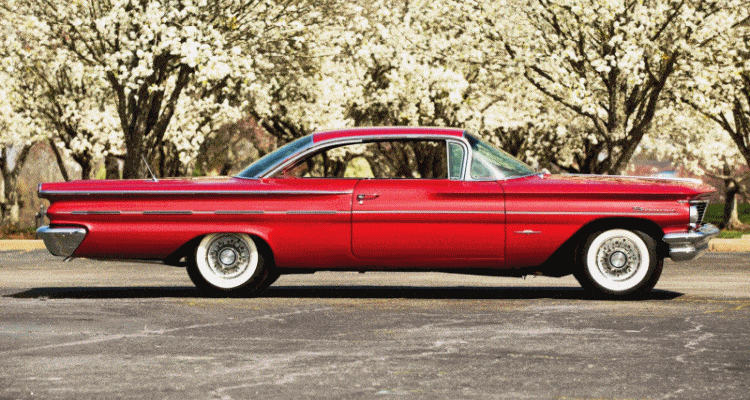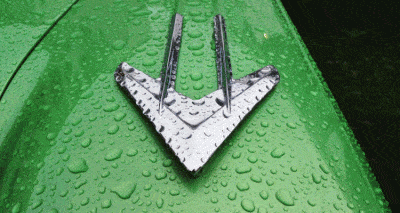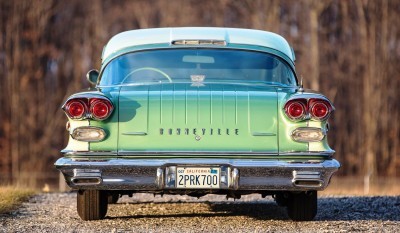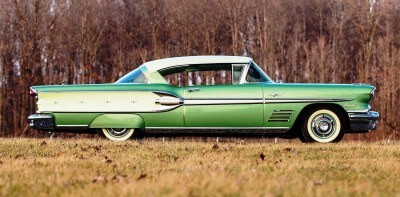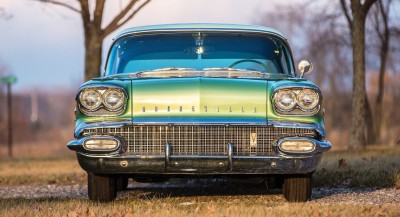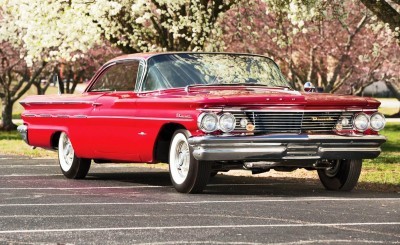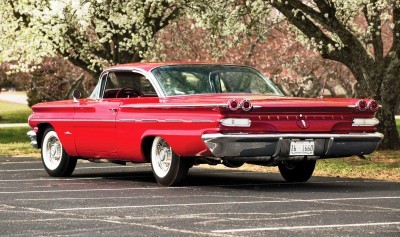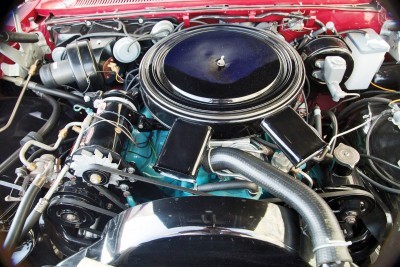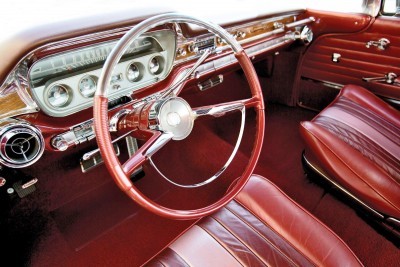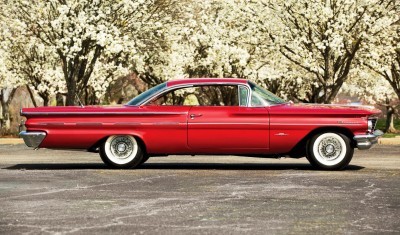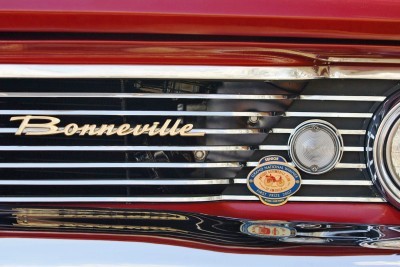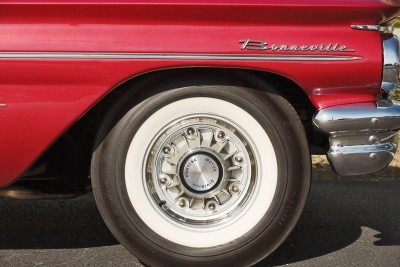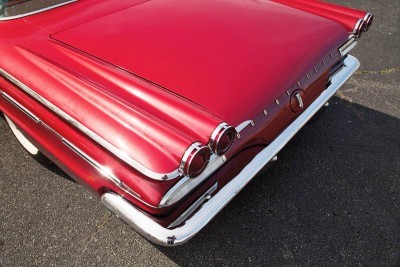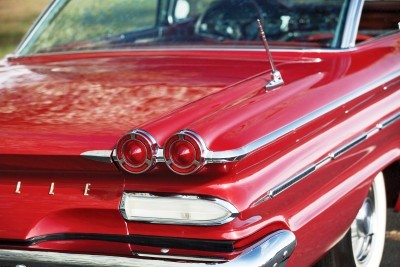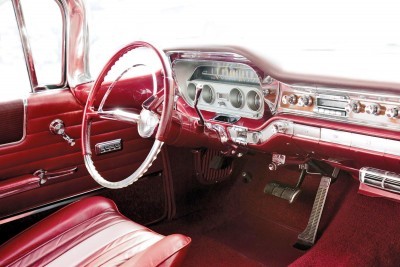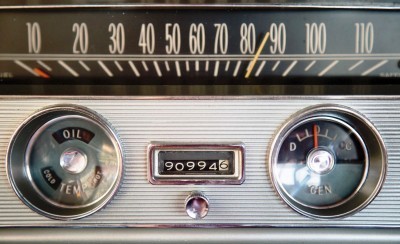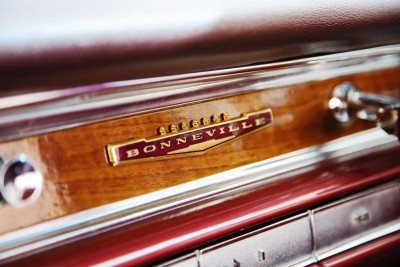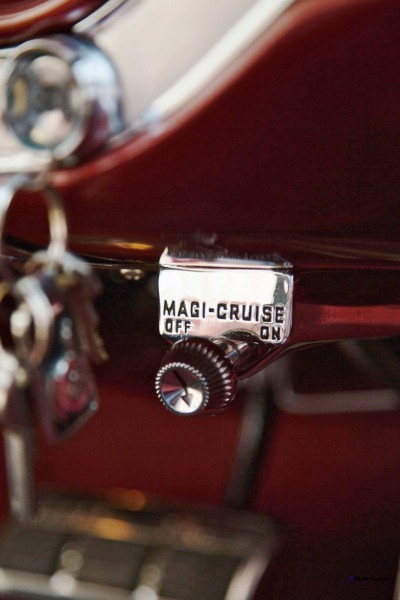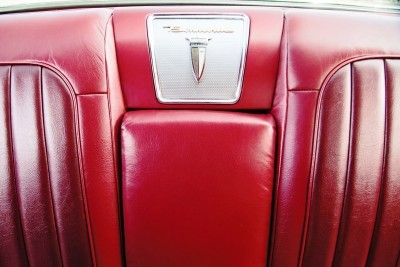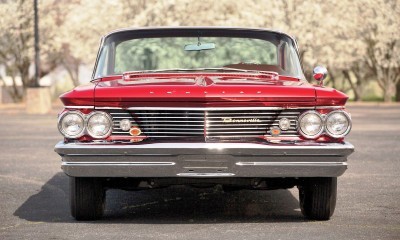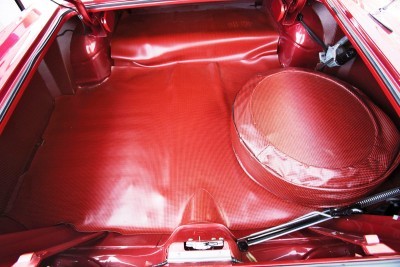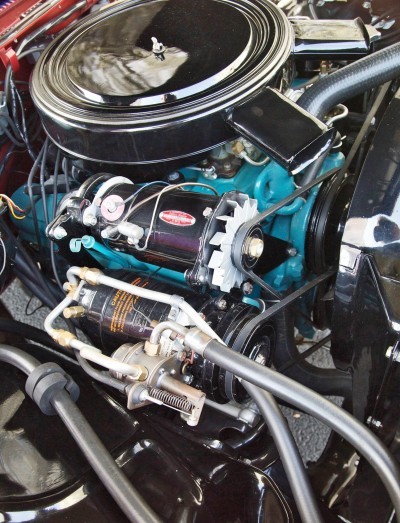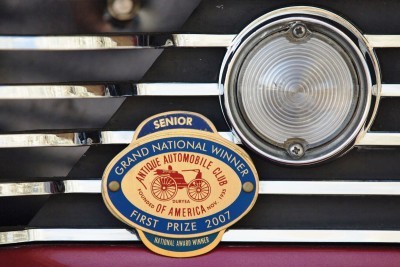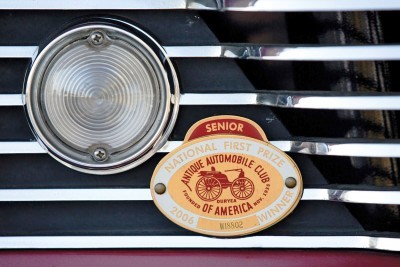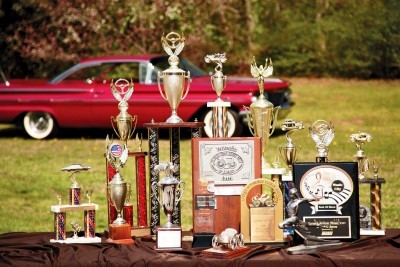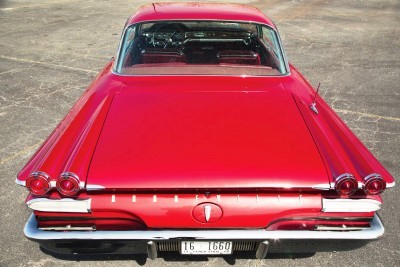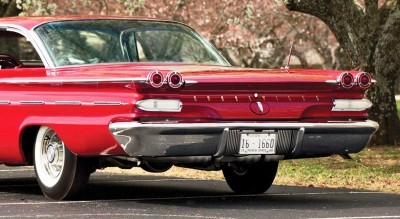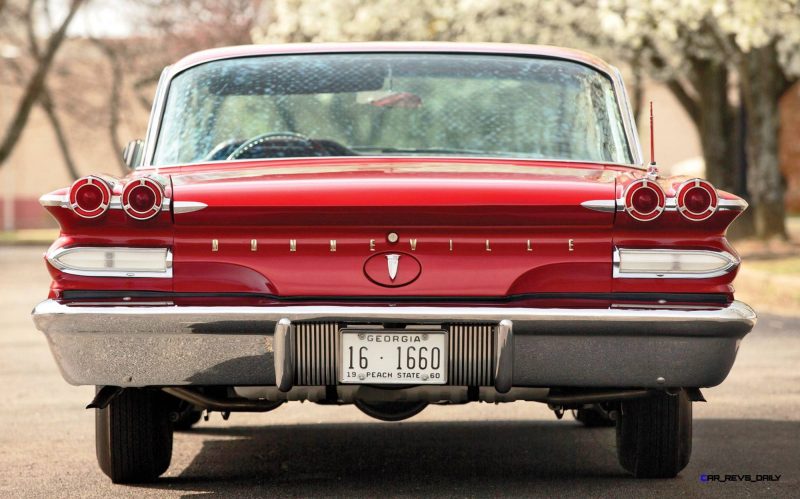 There is some debate as to what was the first American Musclecar. The Mustang certainly takes most of the glory in launching this new segment, but a few important machines paved that road first with big, affordable power.
There is some debate as to what was the first American Musclecar. The Mustang certainly takes most of the glory in launching this new segment, but a few important machines paved that road first with big, affordable power.
The Bonneville launched in 1958 but really became unique and special in 1959 and 1960 – with a wide-track design that stood apart from similar cars from the GM R&D trenches.
And though it looks huge today, this 1960 is actually a drastic lightweight-ing of the previous models, like this 1958 example below.
In fact, the Bonneville became the blue-collar hero of affordable speed within GM before its appeal real set the marketplace alight. With a Bonneville Sport Coupe, the brand had finally found its niche within the GM ‘ladder of success’ brand hierarchy. It would be brasher, louder and quicker than Buick’s and Oldsmobiles — with go-fast tech sprinkled throughout the risky, space-age designs.
Lacking the big loyal buyer audience of Buick et all meant Pontiac could be risker than the other brands — with some incredible machines setting Pontiac’s brand identity and market position for the brand’s next 50 years. Retired in 2009, the ‘kill Pontiac’ discussions doubtlessly explored the future potential of each division. For Pontiac, that rock-solid identity of fast/cheap surely had potential. But, as we all know, GM nearly exhausted the well of Pontiac enthusiasm. Pumped nearly dry, Pontiac’s global potential was drastically limited by every single car they made from 1975 to 2005. Fake exhausts, fake aero kits, fake sportiness was all that would come up from the ground by the end of its run.
Looking at cars like the Bonneville Sport Coupe, you can almost feel the company and the brand’s potential hitting a high note — even 55 years later. The Bonneville Sport Coupe gusher certainly delivered big returns for GM, but was ultimately a victim of its own success.
This very car is said to be one of the best in the world – thanks to its loaded equipment list and careful recent restoration. Since reclaiming its original glory, this Bonneville Sport Coupe has scooped up a trunkfull of awards and concours trophies. And that was a bigggg trunk to fill up!
1960 Pontiac Bonneville Sport Coupe
RM Sotheby’s
1960 Pontiac Bonneville Sport Coupe
-
Chassis no. 860P21034
318 bhp, 389 cu. in. OHV V-8 engine, four-speed Hydra-Matic transmission, coil-spring independent front suspension, live rear axle with semi-elliptical leaf springs, and four-wheel power hydraulic drum brakes. Wheelbase: 124 in.
-
One of the finest restored examples in existence
-
Factory-equipped with Tri-Power, bucket seats, and air conditioning
-
Original drivetrain
-
Meticulously finished; AACA Bomgardner Award winner
The Pontiac Bonneville became a full-fledged series for 1958, comprising a hardtop coupe and a convertible. Both were built on the 122-inch Chieftain wheelbase. The Bonnevilles were the most expensive Pontiacs, with distinctive trim and appointments and the Star Chief’s 255-brake horsepower V-8. “Tri-Power,” using three Rochester two-barrel carbs, became available, and its lower cost resulted in few orders for the still-available fuel injection.
All General Motors cars were redesigned for 1959, with Pontiac having the sole distinction of a “Wide Track” chassis. The series, now called Bonneville Custom, gained the new 389-cubic inch engine with a four-barrel carburetor. Hydra-Matic-equipped Bonnevilles had 10.0:1 compression, which resulted in 303 brake horsepower with four-barrel carburetion, and they were now on the 124-inch Star Chief wheelbase. With 24,015 built, the Bonneville Sport Coupe, Pontiac’s two-door hardtop, was popular but much less common than the 39,000 Vista hardtops produced in the series. The Sport Coupe offered here is rarer still, by far.
The car was purchased sight unseen by the current owner in the mid-1980s. It sat in storage for nearly two decades, until he realized how rare and unusual it was and embarked on a full restoration in 2004. As delivered from the factory, the car not only had the usual Hydra-Matic transmission, power steering, and brakes but also the coveted Tri-Power triple-carbureted engine. What sets it apart are the bucket seats, rare in coupes, as well as the sought-after eight-lug wheels, a style used in 1960 only, and factory air conditioning, which was still years from becoming ubiquitous. All factory air-conditioning components were present, even the special fuel pump used on Pontiacs that were so-equipped.
Approximately $150,000 was spent on the restoration, not counting labor performed by the owner and a friend, the latter a skilled body and paint craftsman. The drivetrain, air conditioning, and miscellaneous ancillaries were rebuilt by specialty shops. The car was painted Coronado Red and has all matching numbers, including the original Tri-Power 389 with correct vacuum carburetor linkage. Other equipment includes a Wonderbar signal-seeking radio with a power rear antenna, a padded dashboard with a low-fuel warning light, factory cruise control with a Speed Guard speedometer, two-speed electric wipers with washers, and power windows all around, which was unusual as most had power in the front only.
The quality of the restoration is attested by no fewer than seven AACA awards, beginning with First Junior and progressing through Senior, National, Grand National, Repeat Grand National, and Preservation awards. The car was selected from those participating in all National meets in 2007 as the best post-war restoration in the Southeast region of the country. For this, it received the Bomgardner Award at the AACA National Meeting at the end of the year in Philadelphia, as well as a special grille badge that sets it apart from the more common Senior and National badges. The car was also presented with a fine crystal trophy, of which there is one on permanent display at the AACA Museum in Hershey.
This outstanding Bonneville is almost certainly a one-of-a-kind car given its unusual equipment, and it represents a very rare opportunity to own a proven, high-quality prizewinner.
Photo Credit: Travis Massey ©2015 Courtesy of RM Sotheby’s


Tom Burkart is the founder and managing editor of Car-Revs-Daily.com, an innovative and rapidly-expanding automotive news magazine.
He holds a Journalism JBA degree from the University of Wisconsin – Madison. Tom currently resides in Charleston, South Carolina with his two amazing dogs, Drake and Tank.
Mr. Burkart is available for all questions and concerns by email Tom(at)car-revs-daily.com.


